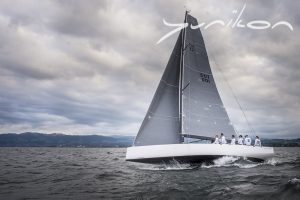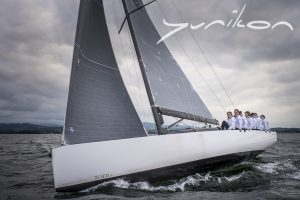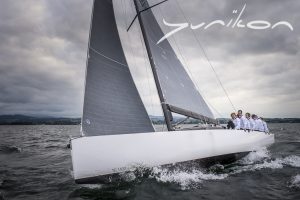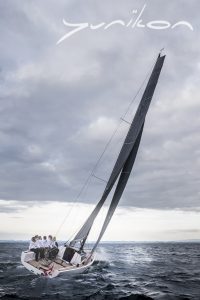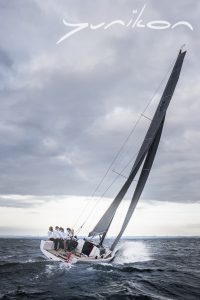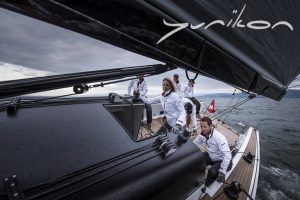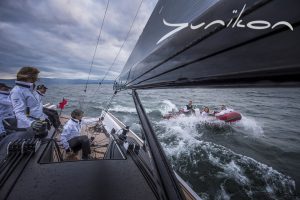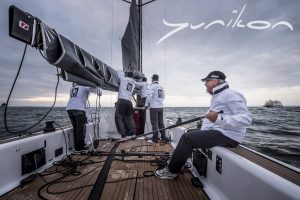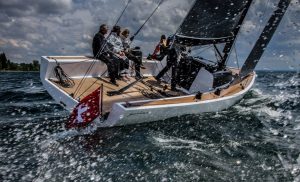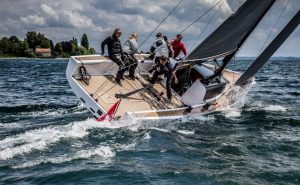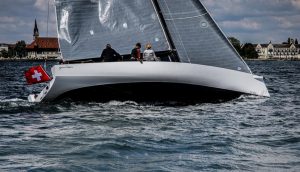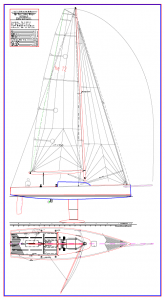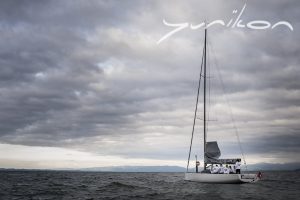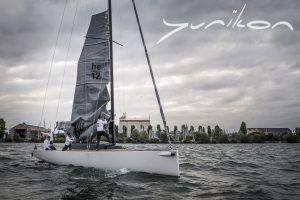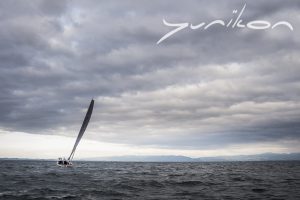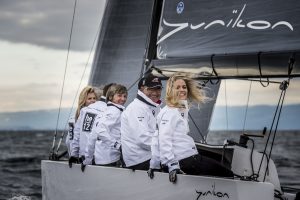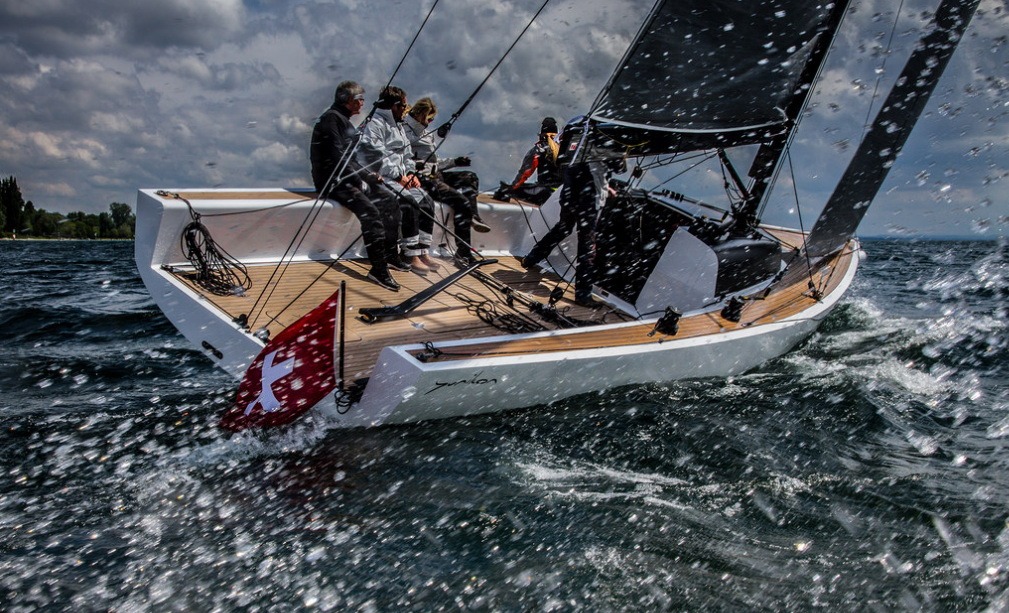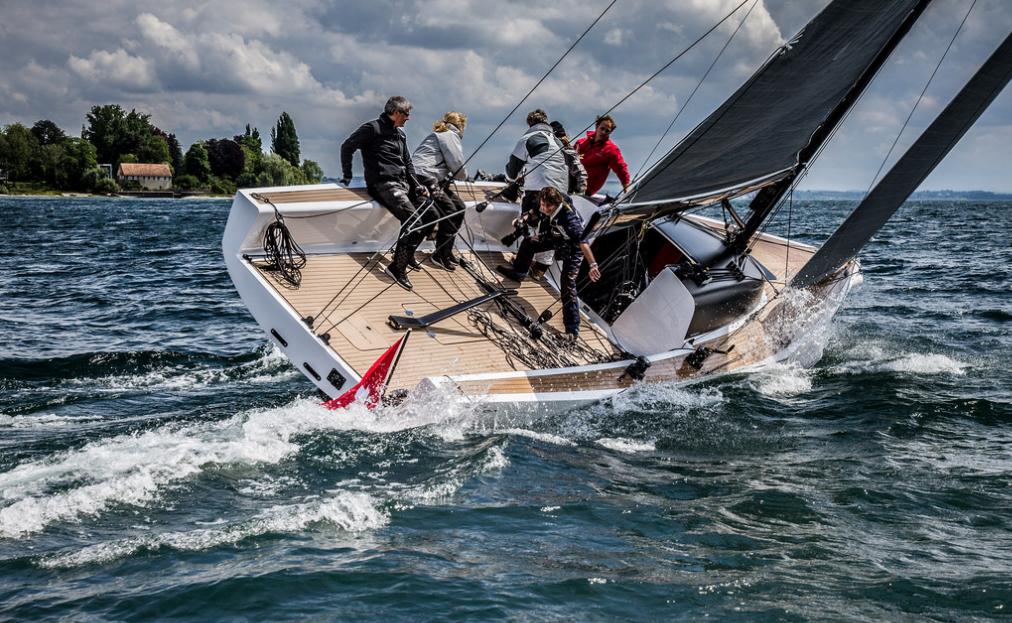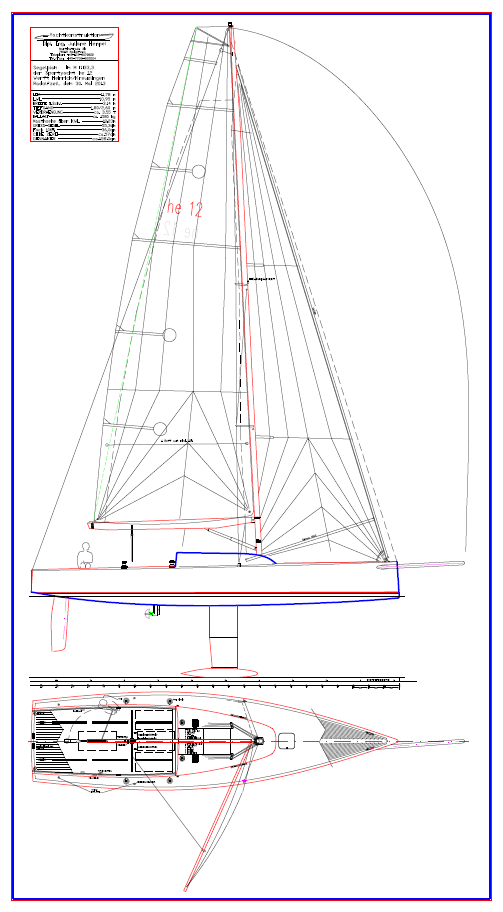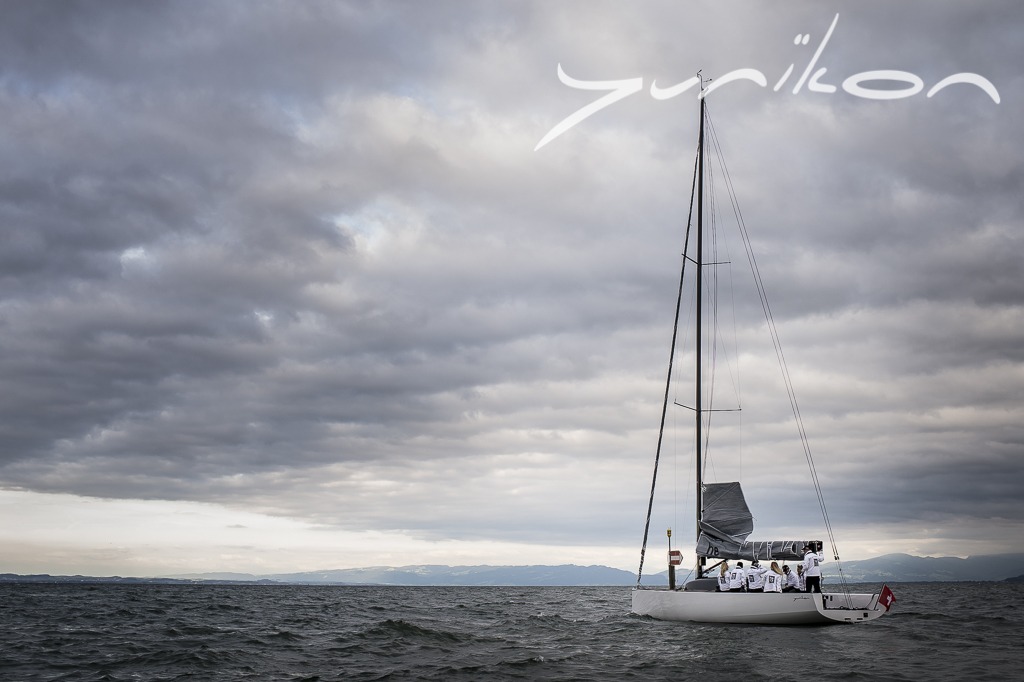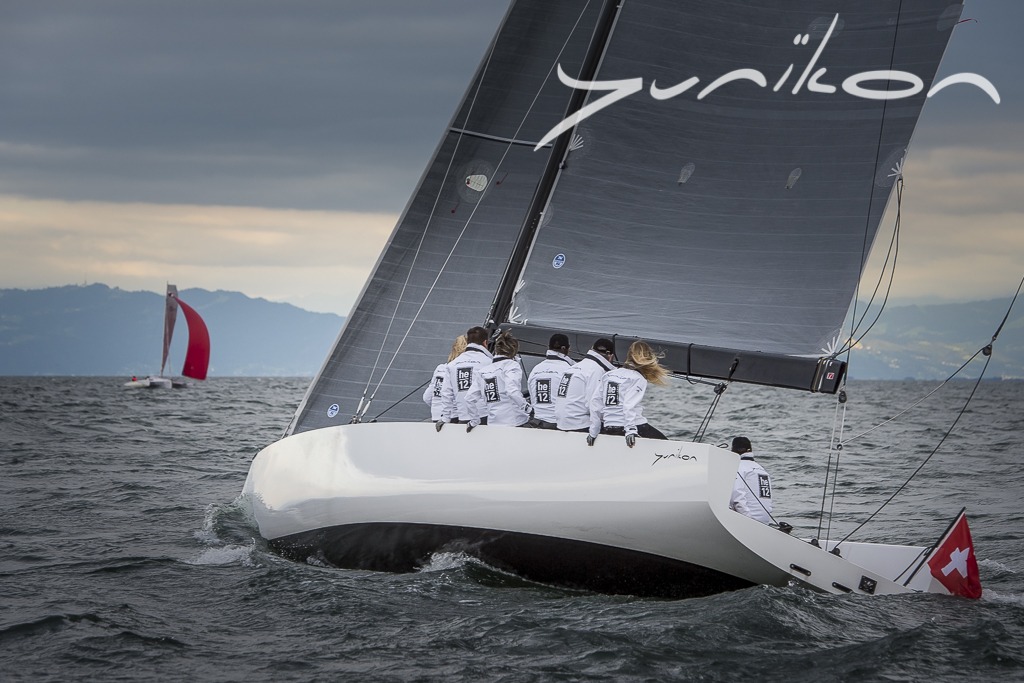Shipyard Heinrich — Kreuzlingen
As part of a keel and rudder optimisation of his Luffe 44, our customer approached our office with the desire for something new.
It was to be a sporty, modern boat, suitable for the owner couple, i.e. two people with sailing experience as a crew.
As is so often the case on Lake Constance, the draught at the berth is limited, but irrelevant when sailing on the lake. That is why the client wanted a lifting keel from 1.80m to 2.60m draught. Almost 50% ballast ensures a sufficient righting moment so that the yacht can also be manoeuvred by two people. The sufficiently large carbon rig (Hall Spar) is adapted to the conditions of Lake Constance, it has approx. 22 degree swept spreaders and a double backstay allows a flared main with ‘squarehead’.
The narrow and elegant design allows a sheet angle of approx. 9 degrees, and can be barbered further inwards if required.
The mainsheet is steered aft into the cockpit using the ‘German system’ on the port side. (Antal and Spinlock fittings) The backstay is adjusted as a coarse and fine adjustment under the cockpit floor on a ‘Magic Wheel’ and then guided via a special base into the cockpit floor directly behind the mainsheet traveller. A furling jib (Bartels) is provided below deck for the jib.
| Total length: | 11.78 m |
| Length in the waterline: | 10.95 m |
| Width: | 3.14 m |
| Depth: | 1.80/2.60 m |
| Displacement: | ~ 3.45 T |
| Ballast: | ~ 1,580 kg |
| Mast height above KWL: | 18.23 m |
| Mainsail: | 55.3 m2 |
| Code Zero: | ~ 50 m2 |
| Fock 106%: | 36 m2 |
| Gennaker: | ~ 158 m2 |
Special attention was paid to a very large cockpit, the transom is open and the crew sits on the side of the deck. In the harbour or at anchor, the cockpit becomes a ‘sunbathing area’ with matching cushions and pillows.
A small diesel with Saildrive (Volvo Penta D1-13) serves as propulsion under the engine.
The yacht is classified according to CE category D and the hull is built with mouldings made of Red Cedar plus laminate inside and out. The frames are glued in the appropriate places and all the longitudinal and transverse beams were designed by the design office in such a way that the Heinrich shipyard in Kreuzlingen was able to mill them out completely on their own milling machine, as was the interior furniture.
These milled components were inserted into the fuselage, glued together in sections, these complete parts were removed again, primed and painted, then glued into the fuselage.
The deck is a plywood deck on wooden deck beams and stringers. It is either glued with teak straps (king planking) or it is given a colour-coordinated ‘Esthec’ deck covering, also with straps and joints (milled).
The superstructure is built entirely in a negative mould milled by the shipyard.
The interior design is simple and even offers a generous view through the cabinets to the foredeck, so that the keel box does not dominate too much. A cool box is provided in the starboard locker, but water only from the canister, as the yacht is rarely used for overnight stays. However, there are 4 berths, a 1.7 metre wide and 2.1 metre long double berth at the head end in the foredeck and two 1 metre wide berths in the saloon, where you can sit comfortably behind the keel box.
